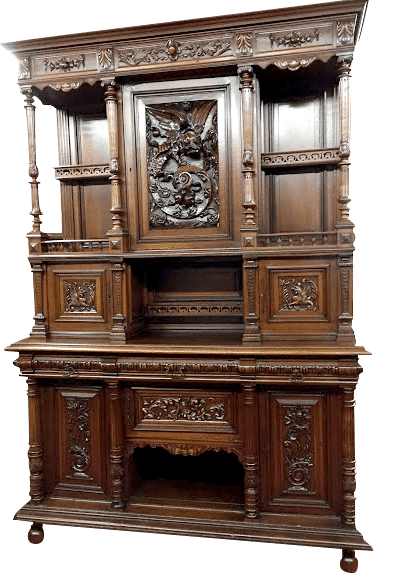
Antique French furniture styles are known for their timeless beauty and elegance. From the ornate Rococo style to the simple lines of the Louis Philippe style, each style has its own unique history and characteristics. Whether you’re a collector or simply appreciate the beauty of antique furniture, this beginner’s guide will help you learn more about these stunning pieces.
Introduction to Antique French Furniture Styles.
Antique French furniture styles are renowned for their exquisite craftsmanship, intricate details, and timeless elegance. Each style has its own unique history and characteristics, making them a fascinating subject for collectors and enthusiasts alike. Whether you’re looking to add a touch of French sophistication to your home or simply appreciate the beauty of antique furniture, this beginner’s guide will provide you with a comprehensive introduction to the world of antique French furniture styles.
Louis XIV Style: Grandeur and Opulence.
The Louis XIV style, also known as Baroque, is characterized by its grandeur and opulence. This style emerged during the reign of Louis XIV in the 17th century and was heavily influenced by the king’s love of luxury and extravagance. Louis XIV furniture is known for its ornate carvings, gilding, and rich fabrics. The use of marble, bronze, and other precious materials was also common. This style was popular among the French aristocracy and was often used to furnish the grand palaces and chateaus of the time. Today, Louis XIV furniture remains highly sought after by collectors and interior designers for its timeless elegance and historical significance.
Louis XV Style: Rococo and Curvaceous.
The Louis XV style, also known as Rococo, emerged during the reign of Louis XV in the 18th century. This style is characterized by its curvaceous lines, asymmetrical shapes, and ornate decorations. Rococo furniture often features intricate carvings, delicate floral motifs, and pastel-colored finishes. The use of gilding, marble, and other luxurious materials was also common. This style was popular among the French aristocracy and was often used to furnish the more intimate spaces of their homes, such as boudoirs and salons. Today, Louis XV furniture is still highly prized for its delicate beauty and romantic charm.
Louis XVI Style: Neoclassical and Symmetrical.
The Louis XVI style emerged during the reign of Louis XVI in the late 18th century and is characterized by its neoclassical and symmetrical design. This style was a reaction to the excesses of the Rococo style and was influenced by the classical architecture of ancient Greece and Rome. Louis XVI furniture features straight lines, geometric shapes, and simple, elegant decorations. The use of marble, bronze, and other high-quality materials was also common. This style was popular among the French bourgeoisie and was often used to furnish the more formal spaces of their homes, such as dining rooms and drawing rooms. Today, Louis XVI furniture is still highly prized for its timeless elegance and refined simplicity.
Empire Style: Imperial and Ornate.
The Empire style, also known as the Napoleonic style, emerged during the reign of Napoleon Bonaparte in the early 19th century. This style is characterized by its grandeur and ornate decorations, inspired by the art and architecture of ancient Egypt and Rome. Empire furniture features bold, symmetrical designs, with heavy use of gilding, bronze, and other luxurious materials. The use of animal motifs, such as lions and eagles, was also common. This style was popular among the French aristocracy and was often used to furnish their grand salons and boudoirs. Today, Empire furniture is still highly sought after for its opulent and imperial aesthetic.
